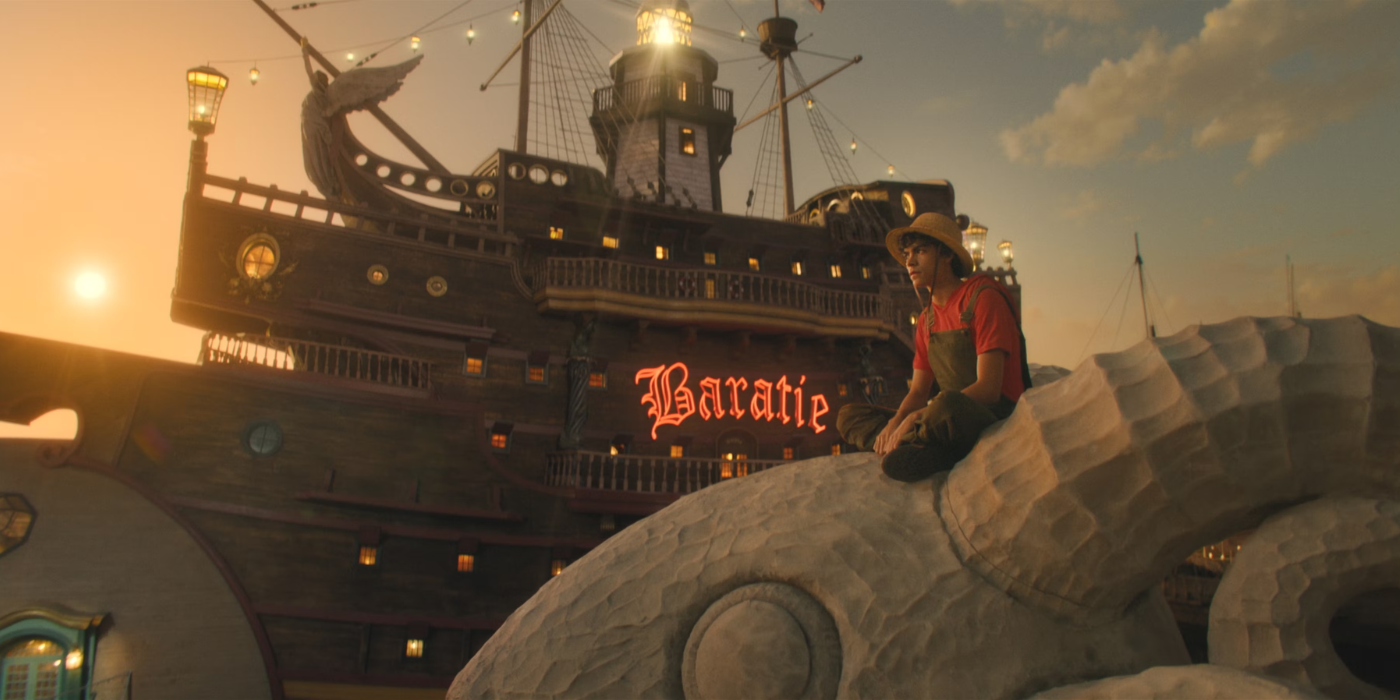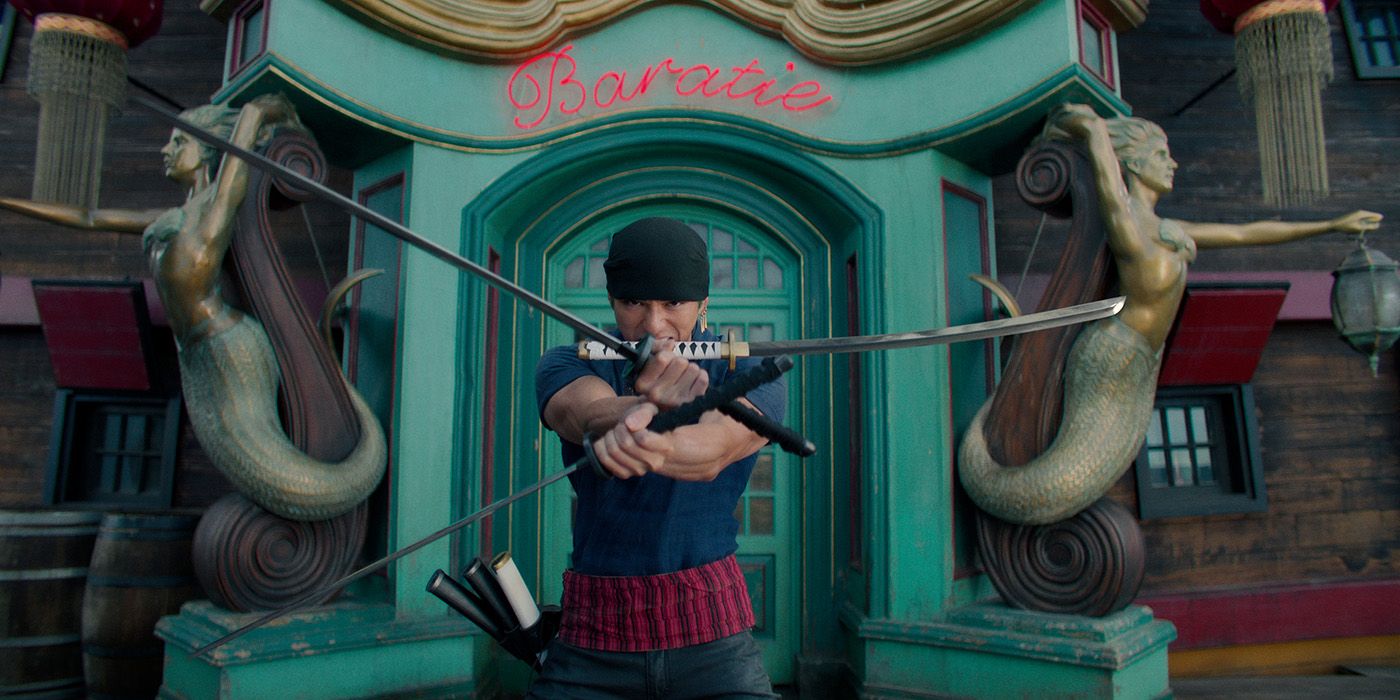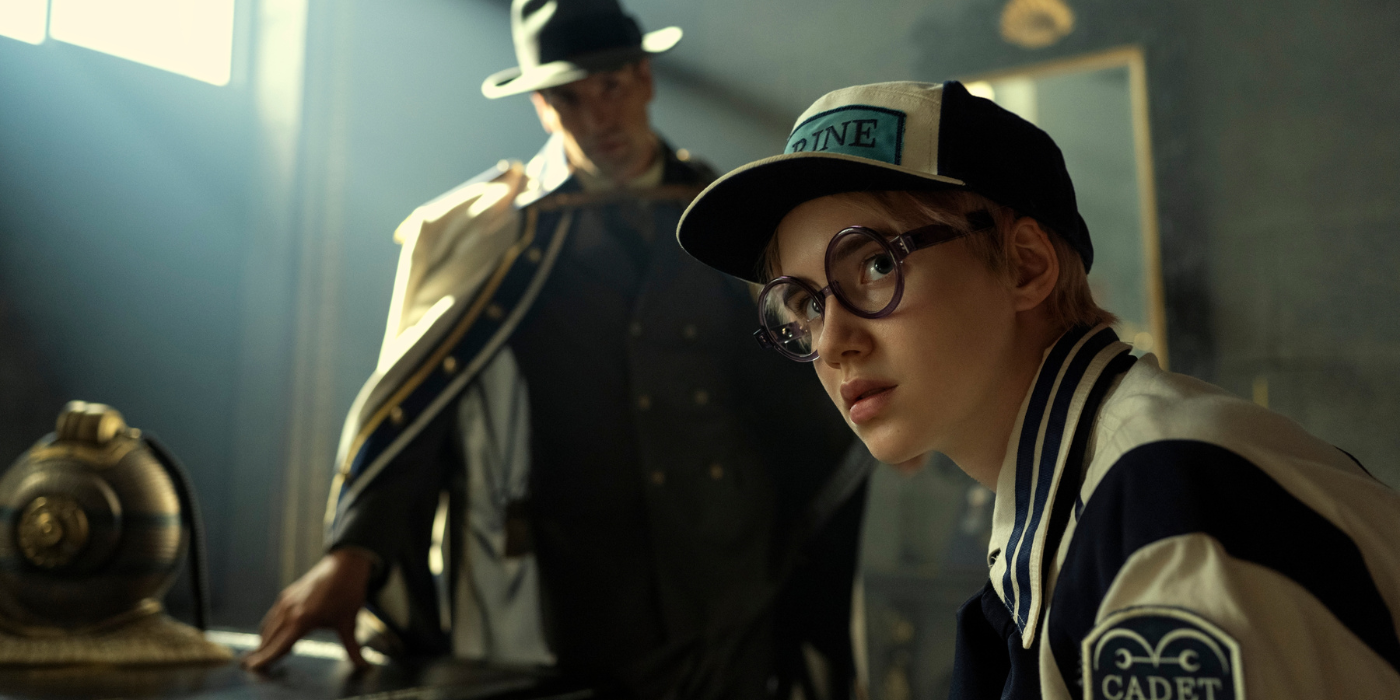Editor’s Note: The following contains spoilers for Netflix’s One Piece
The Big Picture
- The live-action One Piece adaptation on Netflix is a successful anime adaptation that respects the original source material.
- While some characters and storylines had to be changed or omitted, the essential elements of One Piece are present in the series.
- Netflix’s track record with anime adaptations has been poor in the past, but the visually stunning and technically impressive production of One Piece proves to be an exception.
Netflix’s live-action One Piece adaptation is finally here and has defied all the odds to become a brilliant anime adaptation that works marvelously where others have failed miserably. Co-creators Steven Maeda and Matt Owens have crafted a phenomenally entertaining adventure series that holds legitimate reverence for Eiichirô Oda‘s beloved source material. In a sub-genre that has had middling highs and catastrophic lows, the positive reception of Netflix’s One Piece is a big win.
That’s not to say that Netflix’s One Piece is without flaws, and it likely won’t be the favored manga adaptation over the infamously long-running anime series. As with any adaptation, some ideas and concepts are going to be changed or cut out entirely, and that is the case here. It’s a shame that characters like the guard dog in the Orange Town arc didn’t get their stories told, but the essential details and core stories that make One Piece such a timeless IP are ever-present in the Netflix live-action series. Even better, it’s also the rare anime adaptation that appeals to hardcore fans while also being enjoyable for audiences unfamiliar with the source material. It is a difficult balance that anime and manga adaptations have historically had a tough time striking.
Netflix’s Track Record of Anime Adaptations Prior to ‘One Piece’ Is Abysmal
Live-action takes of beloved anime stories have a notorious reputation that precedes them. Some are so bad they’re almost good like the absurd Dragonball Evolution. Most just feel like completely missed opportunities to tell a compelling story, such as the miscast and misguided Ghost in the Shell. However, Netflix has typically been one of the worst offenders of bad anime adaptations.
A prime example is Death Note, which does little to tell the story of such a dark and compelling storyline properly. Despite the pitch-perfect casting of Willem Dafoe as Ryuk, the 2017 Death Note film is a tonally confused and visually uninspired mess that fails to tell this tragic tale with any grace. Hopefully, the Duffer Brothers’ upcoming remake can do the source material justice. Another misfire from Netflix is the Cowboy Bebop live-action series. This one at least got the look of the neo-detective show right, but had almost none of the personality or charm.
Netflix’s ‘One Piece’ Is a Visually Stunning Technical Marvel
Right from the first opening scene of Netflix’s live-action One Piece series, which depicts the historic intro moment where Pirate King Gold Roger (Michael Dorman) is executed and the world’s pirates search for the titular trailer, it is abundantly clear that the production team behind the series took immense care in bringing this fantastical world to life. At a reported budget of $18 million per episode, Netflix’s One Piece is one of the most expensive shows ever made. With a stunning blend of practical and digital effects, that hefty price tag does not go to waste.
While yes, CGI is a must for things like Luffy’s (Iñaki Godoy) Devil Fruit powers and the sea monsters in the ocean (both of which actually look great on screen), the bulk of Netflix’s One Piece is all surprisingly practical. Everything from the massive pirate ships to the several towns featured in the show are all physical and tangible, adding an extra level of immersion to a world that is difficult to adapt. The production design team led by Richard Bridgland really deserves a ton of credit for their detailed and impeccable work. Those elements all combine for a visually stunning series thanks to real sets, real ships, real costumes, real action, and real fun.
Speaking of action, those setpieces are a ton of fun to watch as well. Again, there is a lot of physical action and stuntwork rather than CGI spectacle, making the sequences feel raw and visceral. We would also be remiss if we didn’t give at least one mention to the remarkable score from Sonya Belousova and Giona Ostinelli, which has gripping original tunes in addition to nods to classic themes.
Netflix’s ‘One Piece’ Embraces the Franchise’s Goofy Elements
While the general concept of One Piece is rather simple, it follows suit with other anime shows by having plenty of goofy and unrealistic elements. Many credit elements like this as the reasons live-action adaptations fail, with the fantastical elements not translating well. Netflix’s One Piece isn’t afraid to flaunt its bizarre concepts from the original anime, being filled with unexplainable animal-themed attire, snail-based communication devices, and wholly impractical swords and weaponry.
As silly as these concepts are, they’re also what make the IP special and unique. Translating them isn’t easy, but maybe it is for an IP like One Piece, since it is one with a more lighthearted tone and somewhat self-aware sense of humor. The fact that these characters can shout phrases like “Gum Gum” and “Chop Chop” and not immediately come across as the corniest thing in the world is an impressive feat in it of itself.
Netflix’s ‘One Piece’ Stays True to the Original Story While Making Changes That Make Sense
In truth, a great adaptation should not be 100% accurate. If it’s going to be just like the original, why even make it? When adapting a story that has already been adapted in a different medium, the goal should be to find a balance between the original material that works and changes that make sense. One Piece passes that test with flying colors.
The overall plot (minus a few nonessential plot points) is practically identical to that of the original anime and manga. Luffy’s journey to become King of the Pirates is showcased here as he progressively finds new crew members in Zoro (Mackenyu), Nami (Emily Rudd), Usopp (Jacob Romero), and Sanji (Taz Skylar). The changes come in largely through how the story structure is paced. For example, Arlong (McKinley Belcher III) is framed as the main antagonist of the whole first season rather than just in his own arc like in the anime. This is shown by giving him a more intrinsic connection to the other season villains like Buggy the Clown (Jeff Ward), who is a particular highlight of the show that really plays up his clown motif even more than the anime.
Perhaps the biggest change is the early introduction of Vice Admiral Garp (Vincent Regan) and a much bigger role for Marine cadets Koby (Morgan Davies) and Helmeppo (Aidan Scott). It’s a big deviation, but it’s one that still works. Not only does this introduce Luffy’s unique connection to Garp much sooner, but it also starts Koby and Helmeppo’s friendship a lot earlier since they become far more prevalent later in the anime. Hopefully this balance of accuracy and originality will continue in the all but confirmed second season.
Netflix’s One Piece is available to stream now.
Denial of responsibility! TechCodex is an automatic aggregator of the all world’s media. In each content, the hyperlink to the primary source is specified. All trademarks belong to their rightful owners, and all materials to their authors. For any complaint, please reach us at – [email protected]. We will take necessary action within 24 hours.
Khushi Patel is a science fiction author who lives in Austin, Texas. She has published three novels, and her work has been praised for its originality and imagination. Khushi is a graduate of Rice University, and she has worked as a software engineer. She is a member of the Science Fiction Writers of America, and her books have been nominated for several awards.




